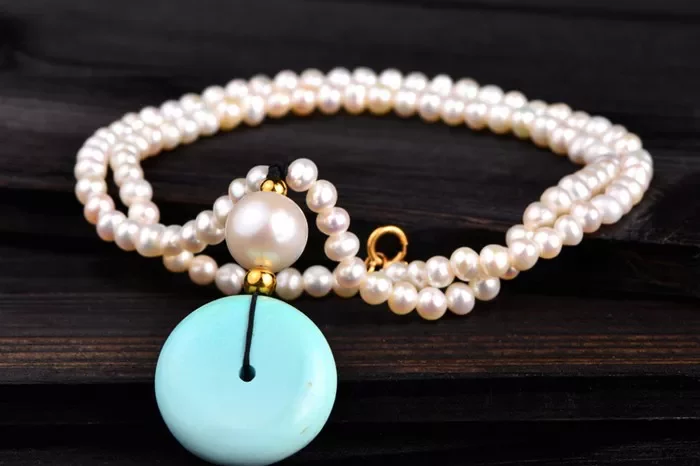The world of gemstones is a fascinating realm where nature’s wonders meet human creativity. Among the myriad gems that captivate our imagination, turquoise stands out for its stunning blue-green hues and cultural significance. However, not all turquoise is created equal, and one term that often arises in discussions about this gem is “reconstituted turquoise.” In this article, we will delve into the meaning, creation process, and significance of reconstituted turquoise, exploring both the artistry and science that make this gemstone unique.
Defining Reconstituted Turquoise:
Reconstituted turquoise refers to a specific type of turquoise that has undergone a process of enhancement or reconstruction. Unlike natural turquoise, which is mined directly from the earth, reconstituted turquoise is crafted using a combination of natural turquoise fragments and a binding agent. This process aims to maximize the use of turquoise material, create a more stable and durable product, and often achieve a uniform color and pattern.
See Also: The Secrets of Natural Turquoise: Appearance and Characteristics
The Creation Process:
Here’s how recycled turquoise is created:
1. Raw Materials:
The journey of reconstituted turquoise begins with the selection of turquoise fragments. These fragments may be byproducts of other turquoise processing methods or sourced from broken or lower-grade turquoise specimens. The use of these fragments allows for the efficient utilization of resources and reduces waste in the gemstone industry.
2. Grinding and Crushing:
Once the turquoise fragments are obtained, they undergo a grinding and crushing process. This mechanical treatment breaks down the fragments into smaller particles, creating a turquoise powder or fine granules. The size and consistency of these particles play a crucial role in determining the final appearance and quality of the reconstituted turquoise.
3. Binding Agent Addition:
The turquoise powder is then mixed with a binding agent, which serves as the glue that holds the particles together. Epoxy resin is a commonly used binding agent due to its durability and ability to create a stable matrix. The ratio of turquoise powder to binding agent is a critical factor, influencing the color, hardness, and overall integrity of the reconstituted turquoise.
4. Shaping and Forming:
After the binding agent is thoroughly mixed with the turquoise powder, the resulting substance is shaped into blocks, sheets, or specific forms depending on the intended use. This process allows for a higher degree of control over the final appearance of the gemstone, giving artisans the flexibility to create intricate designs and patterns.
5. Stabilization:
Stabilization is a key step in the creation of reconstituted turquoise, enhancing its hardness and resistance to external factors. This process involves subjecting the turquoise composite to heat or pressure, further solidifying the binding agent and creating a more durable material. Stabilization helps prevent the gemstone from absorbing moisture or changing color over time.
Advantages of Reconstituted Turquoise:
Here are the benefits of recycled turquoise:
1. Affordability:
One of the primary advantages of reconstituted turquoise is its affordability compared to natural turquoise. The use of turquoise fragments and the manufacturing process contribute to a more cost-effective product, making this gemstone accessible to a broader audience.
2. Color Uniformity:
Unlike natural turquoise, which can exhibit variations in color and pattern, reconstituted turquoise offers a more consistent appearance. The controlled manufacturing process allows artisans to achieve a uniform color, making it easier to match and incorporate into jewelry designs.
3. Enhanced Durability:
The binding agents and stabilization processes used in reconstituted turquoise contribute to increased hardness and durability. This makes the gemstone less prone to scratches, breakage, or changes in color over time, enhancing its longevity and wearability.
4. Eco-Friendly Practices:
The utilization of turquoise fragments in the creation of reconstituted turquoise aligns with eco-friendly practices by reducing waste in the gemstone industry. This sustainable approach addresses environmental concerns and promotes responsible sourcing and production.
Critiques and Controversies:
While reconstituted turquoise offers various advantages, it is not without its critiques and controversies. Some purists argue that the process diminishes the authenticity and value of the gemstone, as it deviates from the natural formation of turquoise. Additionally, concerns have been raised about the environmental impact of using binding agents and stabilizers, prompting a closer examination of the industry’s ethical practices.
Cultural and Historical Significance:
Turquoise has held cultural and historical significance for centuries, revered by various civilizations for its perceived protective qualities and aesthetic appeal. The use of turquoise in jewelry and religious artifacts dates back to ancient times, with civilizations such as the Egyptians, Persians, and Native Americans attributing spiritual significance to this captivating gemstone. Reconstituted turquoise, while a modern creation, continues to honor and showcase the timeless allure of turquoise in contemporary designs.
See Also: The Profound Meaning of Turquoise Stone: A Full Guide
Artisan Perspectives:
Here’s the Artisan’s perspective:
1. Creativity Unleashed:
Artisans appreciate reconstituted turquoise for the creative possibilities it offers. The controlled manufacturing process allows them to experiment with colors, shapes, and patterns, resulting in unique and innovative designs. This flexibility enables artisans to cater to diverse tastes and preferences in the ever-evolving world of jewelry and craftsmanship.
2. Challenges and Skill:
Working with reconstituted turquoise presents its own set of challenges for artisans. The binding process requires precision, and achieving a harmonious blend of colors demands skill and expertise. Despite the challenges, many artisans find satisfaction in mastering the art of reconstituted turquoise, pushing the boundaries of traditional gemstone crafting.
See Also: [Revealed!] How to Identify Authentic Kingman Turquoise?
Conclusion:
In conclusion, reconstituted turquoise represents a fascinating intersection of nature and human ingenuity in the world of gemstones. The meticulous process of creating this gemstone, from selecting turquoise fragments to shaping and stabilizing the final product, showcases the marriage of art and science. While debates surrounding its authenticity persist, reconstituted turquoise has found its place in the market, offering affordability, durability, and a canvas for artistic expression. As we continue to navigate the evolving landscape of gemstone appreciation, reconstituted turquoise stands as a testament to the industry’s adaptability and commitment to both tradition and innovation.


